RELATED LINKS
> Q&A: Patrick Murray
> Mailbag: #1 pick value
> Senior Bowl: 5 to watch on O
> Senior Bowl: 5 to watch on D
> Senior Bowl videos: Day 2
> Vjax Salute to Service finalist
> Senior Bowl rosters
> Mariota, Winston declare
> 4x #1 pick was traded
> "Super Bowl Bound"
> Shrine Game: 5 standouts
The 2014 NFL playoffs continue to be a fertile ground for water-cooler conversations, and that has certainly been the case at One Buccaneer Place. Last week, prompted by a clever package of plays run by the New England Patriots against Baltimore in the Divisional Round, we took a look back at some of the most memorable trick plays in Tampa Bay Buccaneers history. This week, it's all about controversy.
This year's playoffs have generated a series of controversial moments, each one seemingly a little louder and more persistent than the last. The Dallas Cowboys escaped the Detroit Lions and the Wild Card round in part due to a voided pass-interference penalty. The following week, the Cowboys' chances of winning in Green Bay took a sharp dive when a potential Dez Bryant catch near the goal line was overturned. And, of course, the only topic with any traction after the Conference Championship round was the issue of possibly deflated footballs in New England's win over Indianapolis. That one actually proved big enough to get the "-gate" treatment.
Perhaps you've grown tired of the annoyingly-named "Deflategate" at this point. If so, why not take a walk with us down Buccaneer Memory Lane as we relive some of the more memorable moments that sparked their own water-cooler debates among Buc fans. Below you'll find eight of the most controversial on-field moments in the team's last two decades, presented in chronological order.
1. Seahawks Get a Second Chance
This might be the least familiar entry on the list to Buccaneer fans, but we're willing to be Sam Wyche remembers it well. Wyche's team was in Seattle in late November of 1994, trying desperately to break a five-game losing streak, and it looked like they were about to lock down their first-ever win against their 1976 expansion sisters.

QB Craig Erickson had a good day, completing 22 of 32 passes for 212 yards and two touchdowns, both of them to WR Courtney Hawkins, and the Bucs had a 21-15 lead after rallying from an early 15-0 deficit. After Michael Husted's 35-yard field goal in the fourth quarter, Seattle got the ball back at their own 23 with 3:24 to play. A pass-interference call on Martin Mayhew and a third-down scramble by QB Rick Mirer got the Seahawks across midfield, but the Bucs' defense then forced a fourth-and-12 at its 36 with 1:29 left. Mirer completed a pass to Bennie Blades but Blades was stopped a yard short of the sticks by S Marty Carter and even lost a fumble on the play. The Bucs thought they had held on to win.
Instead, an illegal-contact flag flew in the direction of CB Mike "Scooter" McGruder, who had made contact with Blades during his route, but apparently not enough to prevent a completion. The Bucs would later howl about the call in their locker room, but the referee responded that Blades was "way past" the legal five-yard area when McGruder made contact. In any case, the drive was revived and it continued on to the Bucs' end zone, with FB Mack Strong – filling in for injured star RB Chris Warren – taking it in from seven yards out.
Still incensed after the game, Wyche gave what was surely the shortest post-game press conference in team history. Perhaps the controversy added some pep to the team's step, however; the Bucs won their next four games and Wyche was able to return for a fourth season at the helm in 1995.
2. The Bert Emanuel Rule
If we had chosen to arrange these moments in terms of how memorable they remain in 2015, this one would probably top the list. You know a controversy has staying power when it gains a nickname; in this case, NFL fans witnessed a moment that hinged on what was henceforth known as "The Bert Emanuel Rule."

Emanuel was fourth-leading receiver on a run-oriented offense meant to compliment one of the NFL's best defenses in 1999. That defense, with a core of Warren Sapp, Derrick Brooks, John Lynch and Ronde Barber, had carried the Buccaneers to the NFC Championship Game. It had then defied all expectations by grounding the "Greatest Show on Turf" and helping the Bucs carry a 6-5 lead into the fourth quarter in St. Louis. Unfortunately, Kurt Warner and Ricky Proehl executed a brilliant 30-yard touchdown pass on third down with 4:44 to play and the Bucs suddenly found themselves in desperation mode, and relying on their offense.
Rookie QB Shaun King managed to get the Bucs into Rams territory, and a 22-yard catch-and-run by Karl "The Truth" Williams got the ball down to the St. Louis 22 with 1:25 to play. A sack by Grant Wistrom pushed the Bucs back 13 yards, but a diving catch by Emanuel appeared to get those yards back and set up third-and-10. Tampa Bay burned its last timeout to come up with the potential game-winning strategy.
Meanwhile, the referee used that stoppage to look at the play more closely, though it wasn't immediately obvious to the teams or the spectators what was being reviewed. The Buccaneers' offense actually took the field and huddled up near the 22-yard line, preparing for their third-and-10, but were then stunned to hear that the call had been overturned and they were now facing a third-and-23 back at the 35. Two incompletions later, the game was over and the Rams were headed to the Super Bowl.
Emanuel's catch was overturned because replay showed that the ball struck the ground as he landed with his diving grab. That was apparently enough to rule it incomplete even though Emanuel had the ball securely in two hands and the contact with the ground did not cause the ball to move in his hands. In retrospect, the rule itself was deemed to be unfair and it was changed before the 2000 season; to this day, receivers can make a catch like the one Emanuel pulled off in the 1999 NFC Championship Game and it will be allowed to stand.
As such, this play has transcended Buccaneer history and remains one of the more controversial moments in NFL playoff history.
3. Dunn's TD Goes Unchallenged
Though the stakes weren't nearly as high, the Buccaneers got some revenge when they returned to St. Louis two seasons later, and once again there was a controversial moment late in the game. In this case, it went in the Buccaneers' favor.

The Bucs and Rams had met in 2000, as well, producing perhaps the most exciting regular-season game in Tampa Bay history and an eventual 38-35 win at Raymond James Stadium. The '01 rematch – a second straight Monday Night Football affair between the two teams – was another back-and-forth affair, with the Rams tying at 17-17 late in the third quarter and then pinning the Bucs at their own 10 on the ensuing kickoff. From there, QB Brad Johnson took the Bucs' offense on a 90-yard march, which was capped by RB Warrick Dunn's 21-yard TD run to the right pylon with 11 minutes left in the game.
Two plays in the second quarter proved significant at this point. On a second-and-10 run from the Rams' 23, Dunn was credited with an 11-yard gain and a first down at the 12. St. Louis challenged the spot and got the call reversed, with the ball now spotted at the 14 for a nine-yard gain. Tampa Bay converted the third down anyway and went on to score on a Mike Alstott run. Less than a minute of game time later, DE Steve White sacked Warner and forced a fumble that was recovered by LB Shelton Quarles at the Ram's 15. St. Louis challenged again and won again, with the play ruled an incomplete forward pass. The Rams got to punt the ball out of trouble.
Even though the second reversal may have prevented an easy Buccaneer score, those two challenges came back to haunt the Rams in the fourth quarter. Why? Because this game was played in 2001, not 2004. In '04, the league voted to keep the replay review system but with one small but important tweak: If a team used both of its allotted challenges but was successful on both, it would be granted a third challenge.
The Rams didn't have that option three years earlier, so they had to simply swallow it when replay seemed to show Dunn's foot making contact with the sideline at the five-yard line during his game-winning run. Dunn then leaps from the three-yard line and manages to kick the pylon with his right foot before landing out of bound. That was a fantastically athletic move and rightly ruled a touchdown, but it might have been moot with a replay review of the step he took just before that leap.
4. A Leap and a Loss
We'll keep this one brief because few Buccaneer fans want to review the evening of October 6, 2003. On that Monday night, the defending Super Bowl champs welcomed Tony Dungy, Peyton Manning and the Indianapolis Colts to Raymond James Stadium for a nationally-televised affair. Trying to improve to 3-1 and give the 4-0 Colts their first loss, the Buccaneers rushed out to a 28-7 lead. A pick-six by Ronde Barber made it 35-14 with 5:09 to play.

The rest is a bit of NFL history of which the Buccaneers were not thrilled to be a part. Manning led the Colts on a stunning 21-point comeback in the game's final four minutes, helped immensely by a successful onside kick and a 90-yard kickoff return. A one-yard touchdown run completed the rally with 37 seconds left and sent the game to overtime.
It was in sudden death that the Bucs' terrible evening got a controversial capper. The Bucs won the toss and got the ball past midfield but eventually punted from the Indy 41. Manning led another long drive starting from his own 13 and getting to the Bucs' 31. From there, the Colts ran three times up the middle to position for a field goal and brought out Mike Vanderjagt to try a 40-yard game-winner. Vanderjagt was the NFL's career leader in field goal accuracy at the time, and he would finish the 2003 season a perfect 37-for-37.
Thanks to at least one second chance.
Vanderjagt actually sailed his kick to the right and the Bucs on the field began celebrating madly. The celebration quickly died, however, when a penalty was announced against the home team and Vanderjagt got a second chance. This time he nailed it and the Colts had their incredible comeback victory.
The penalty? Leaping. That's what DE Simeon Rice was accused of doing; specifically, he was said to have violated the rule that prohibits a player from getting a running start and potentially jumping on top of the opposing team's blockers. Referee Johnny Grier explained it later:
"The call was leaping. Leaping is a player starting more than one yard off the line of scrimmage and running forward and landing on players. It was reported that he was running forward. He jumped and landed on his own players. The umpire [Ed Coukart] made the call."
Bucs Head Coach Jon Gruden still seemed a bit mystified by the penalty after the game, but he did not place the loss on that play.
"I'm really going to look at that play, obviously, carefully," said Gruden. "I don't believe we were in error, at least what I could see on the field. We had numerous chances to win this game. I'm not going to cry about that one."
Rice does, in fact, line up several yards behind the line of scrimmage on the play, and he does run forward before leaping. However, his eventual jump is straight up, and he only lands slightly on a Buccaneer teammate after that teammate is blocked backward. Still, Rice apparently violated the letter of the law and Vanderjagt had his surprising miss erased from the record.
5. Alstott Up the Gut…For Two
Tampa Bay and Washington met in November of 2005 at Raymond James Stadium, and this game proved to be a shootout, as well. RB Clinton Portis gave the visiting team a 35-28 lead on an eight-yard touchdown run with eight minutes left in regulation.

This one might have gone to overtime in a 35-35 tie like the '03 Indy game, but some overly aggressive tactics by the Redskins in the final minute caused the Buccaneers to respond with one of the most aggressive decisions in franchise history.
With just over a minute left in the game and the ball at Washington's 30, QB Chris Simms threw down the middle of the field to WR Edell Shepherd. Shepherd caught the pass as he reached the end zone, pulling the Bucs to within one point. Tampa Bay's field goal unit came on to kick the game-tying extra point.
As nearly automatic as extra points are in the modern NFL, the Redskins weren't about to let this one play out uncontested. First, LB LaVar Arrington was flagged for delay of game, but the Buccaneers elected to take the penalty on the ensuing kickoff, as is the usual choice. Then, CB Walt Harris steamed around the end on Matt Bryant's first attempt and blocked the kick, but he only got there because he had jumped offside. At this point, Head Coach Jon Gruden chose to have the ball moved halfway to the goal line and he sent out his offense to go for two points and the win.
A look at fullback Mike Alstott's career.


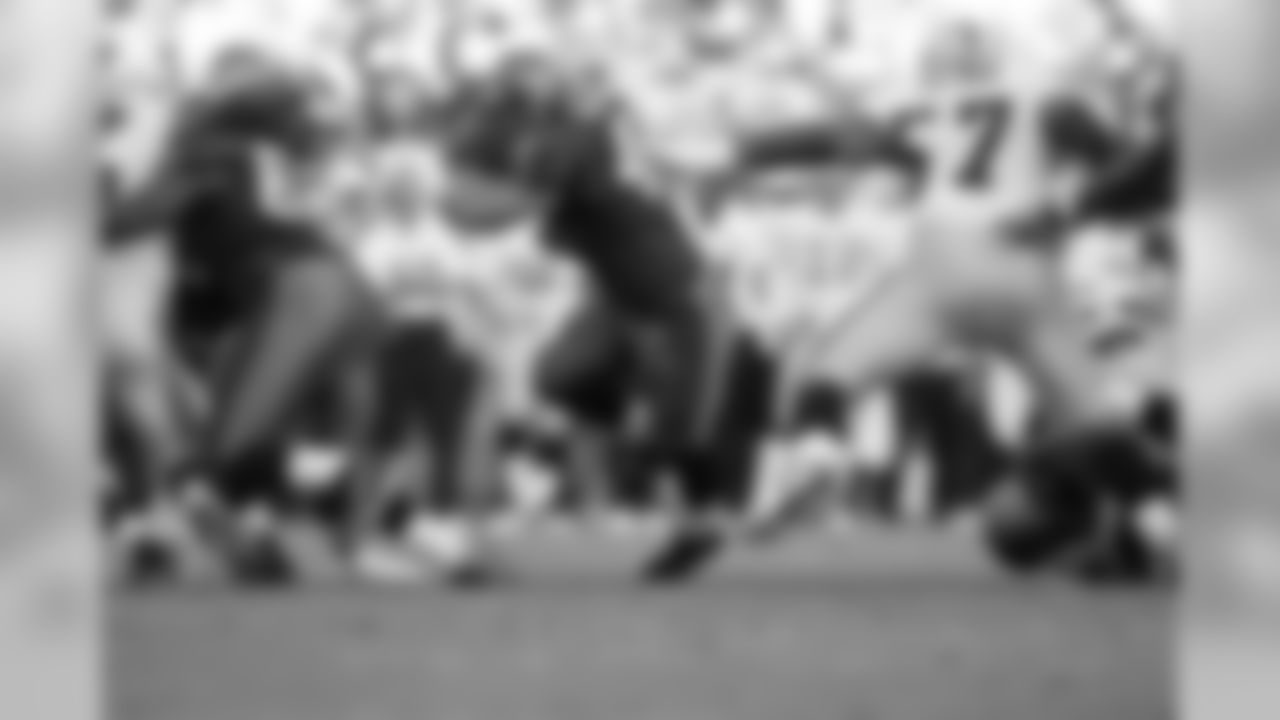
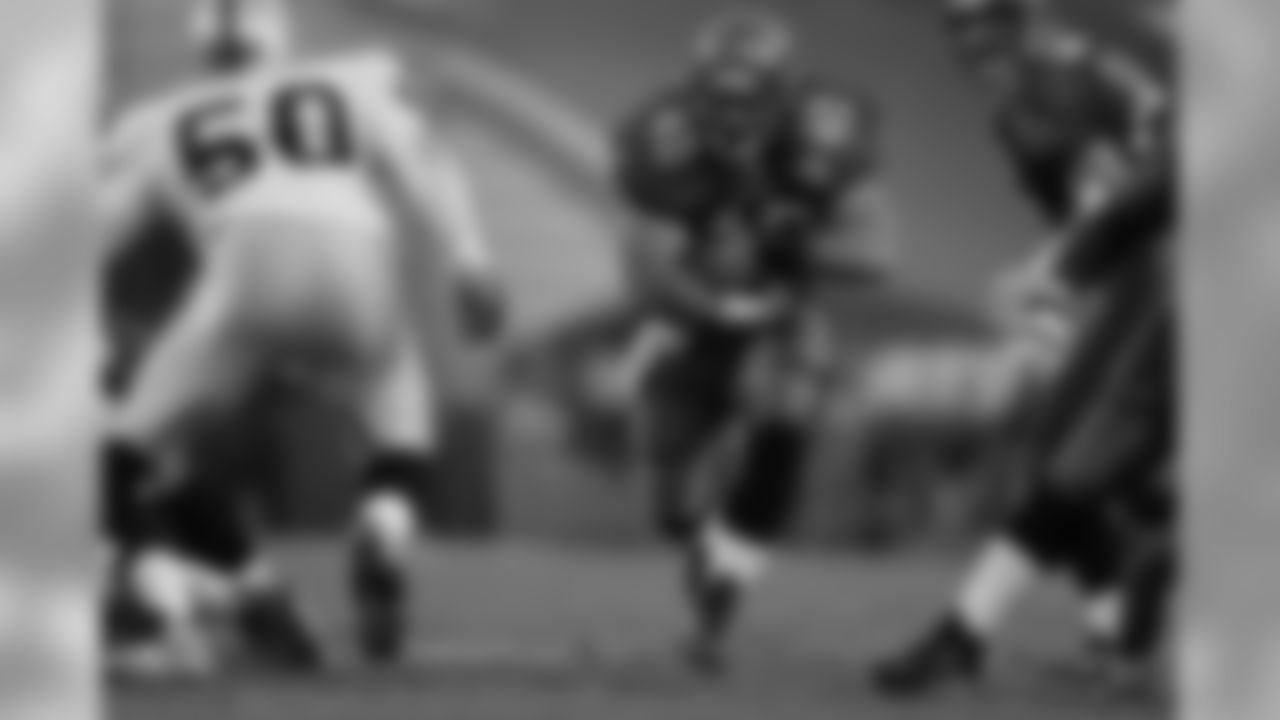
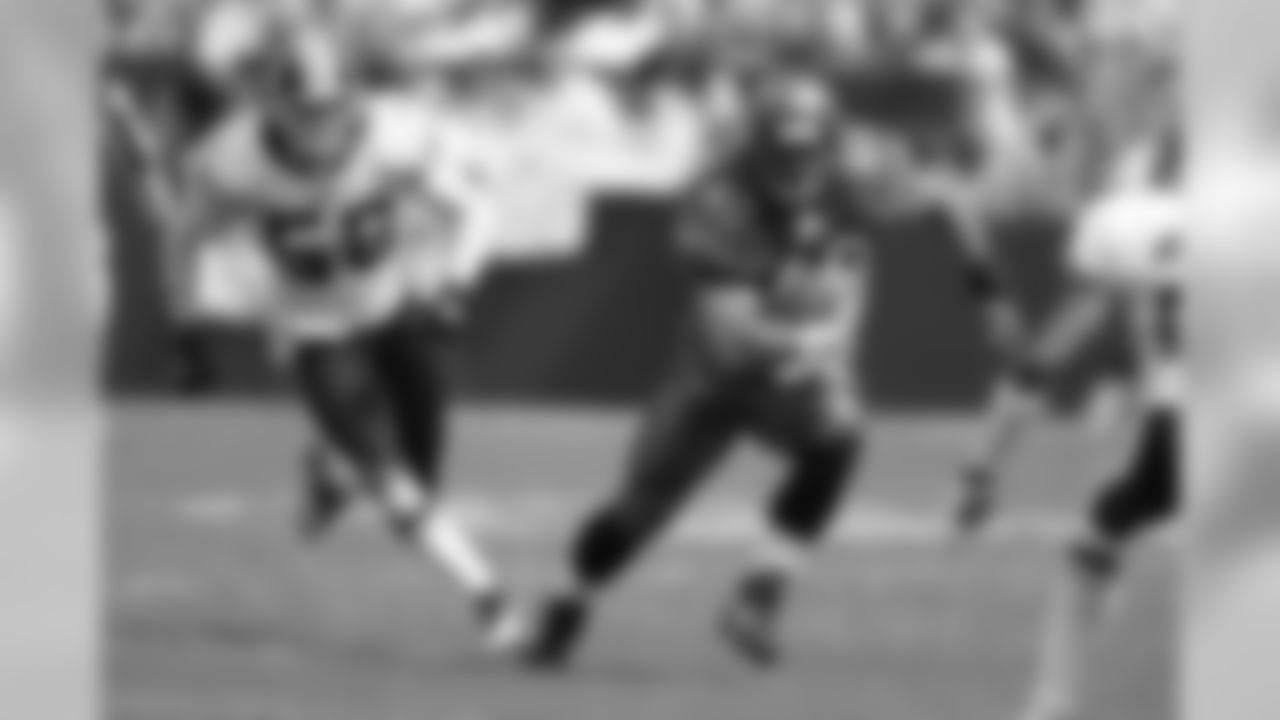
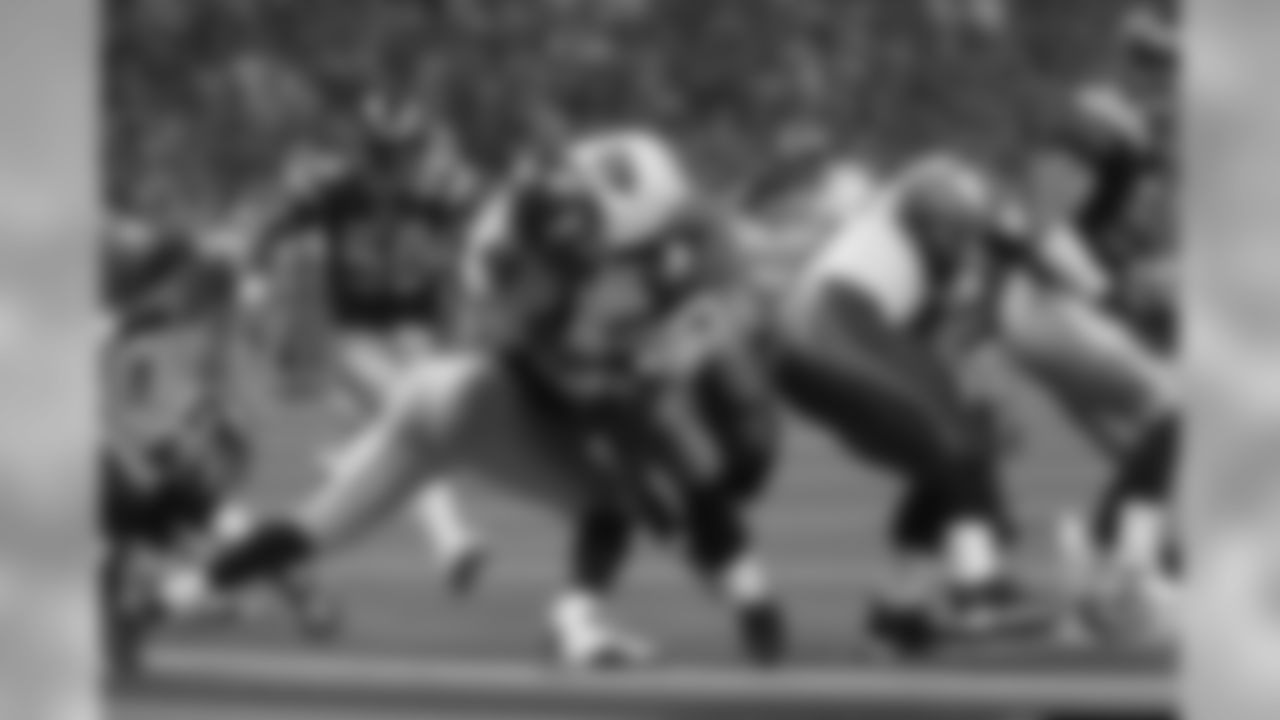
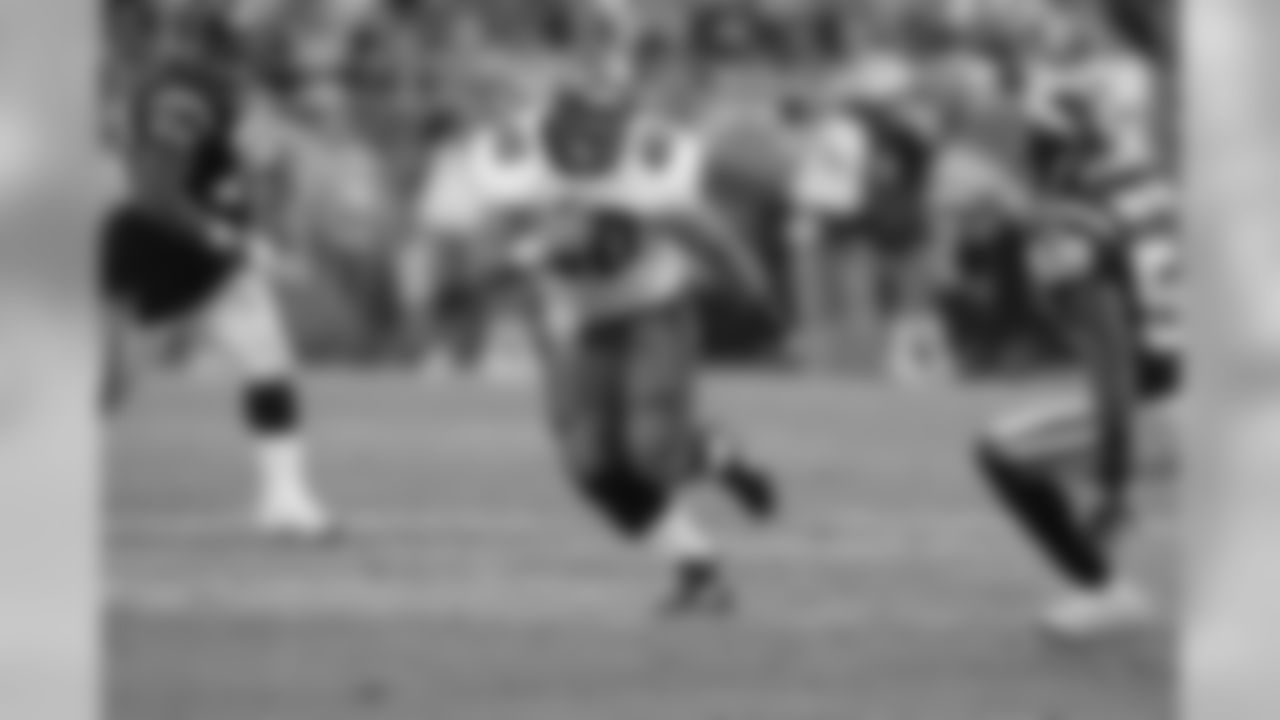
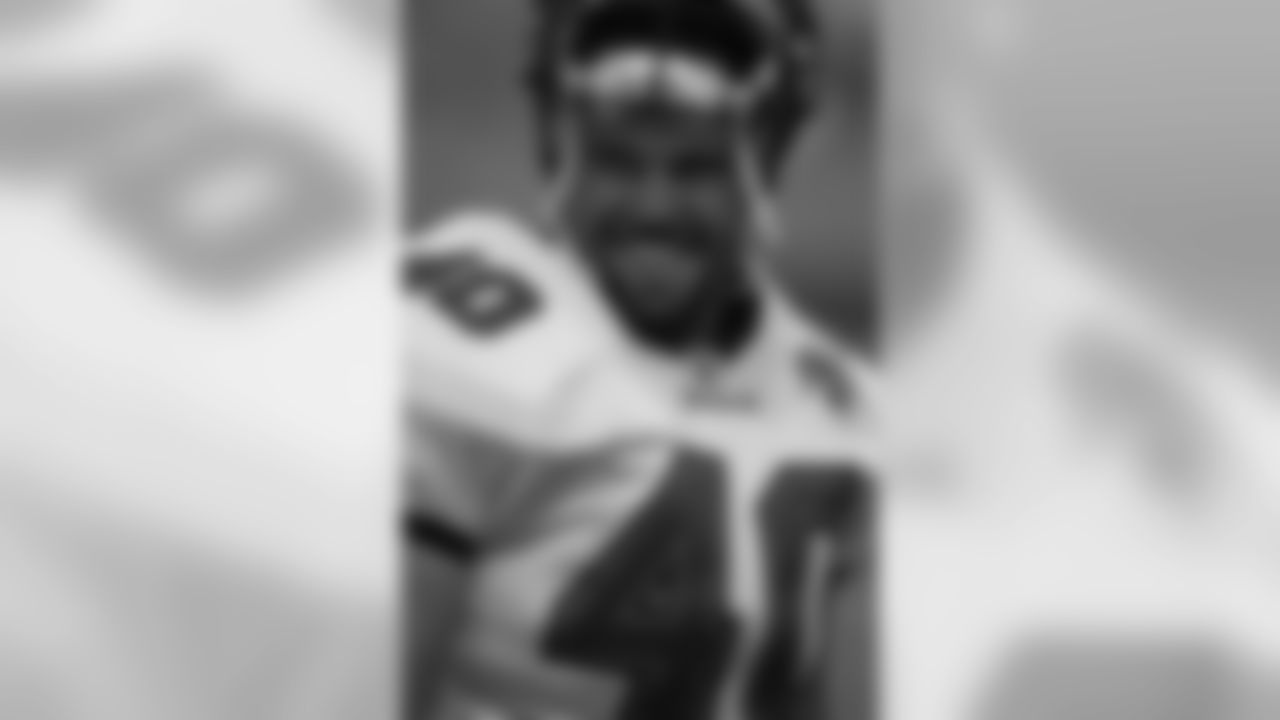
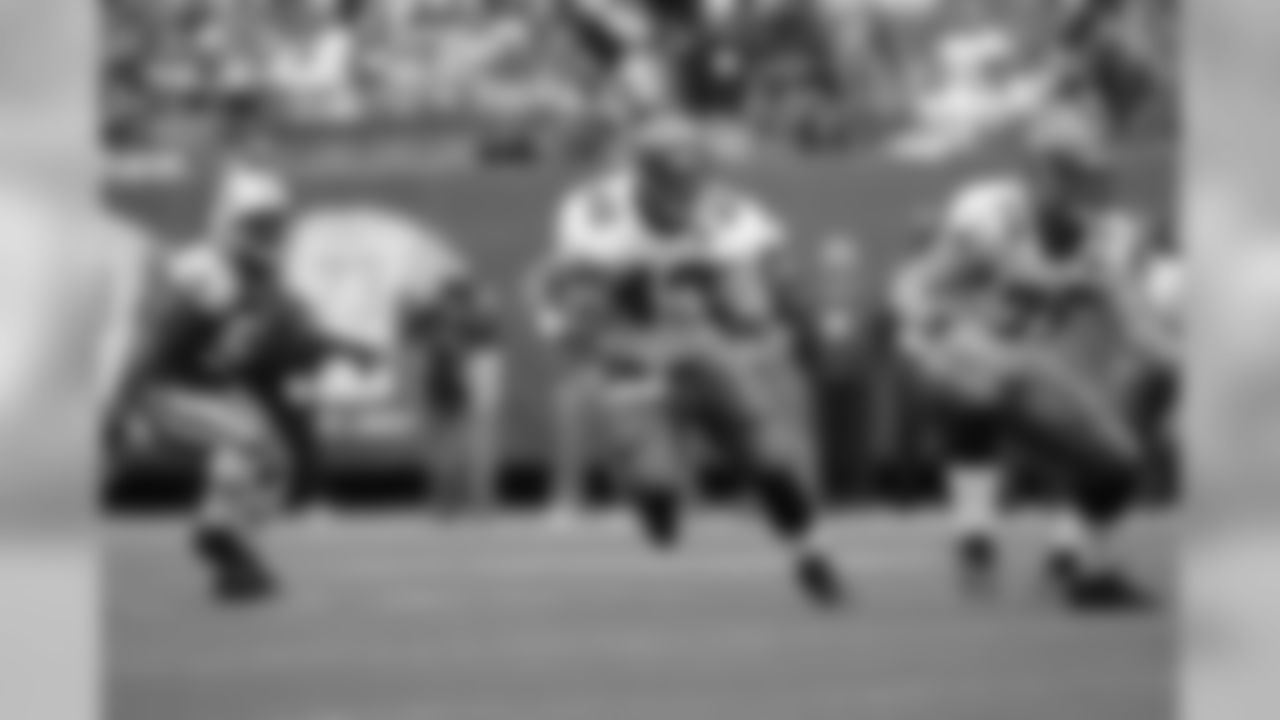
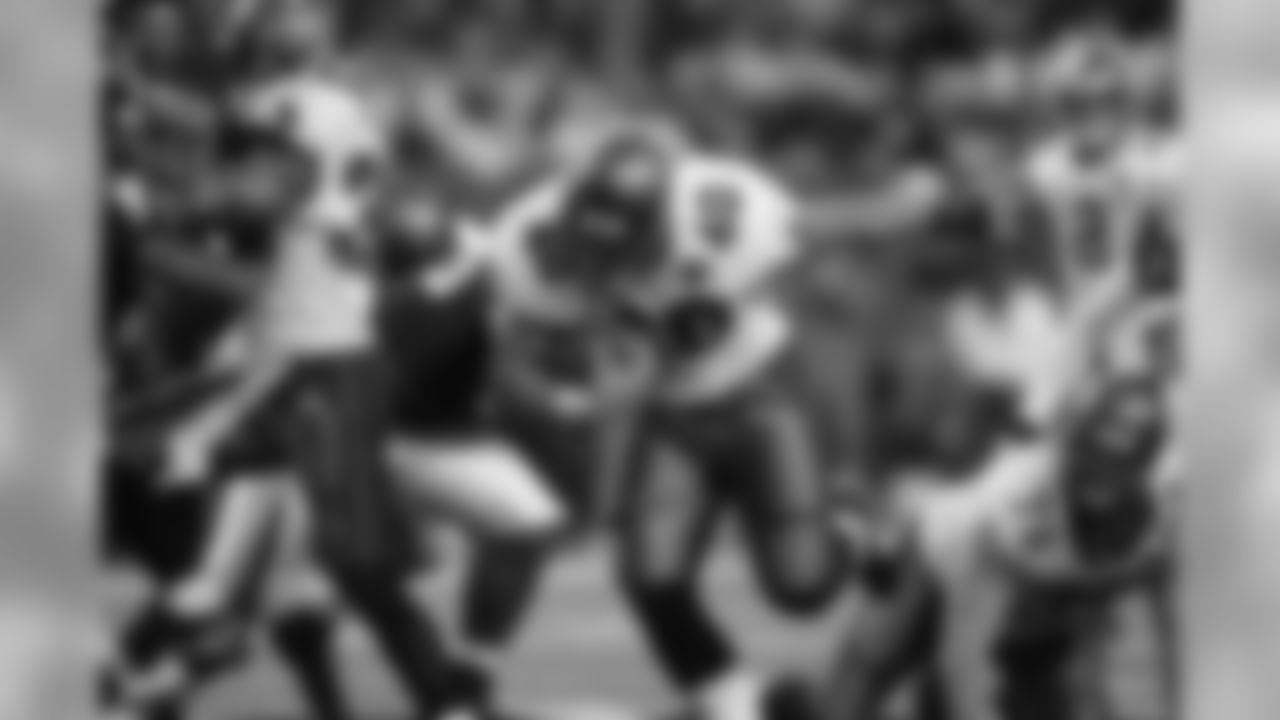



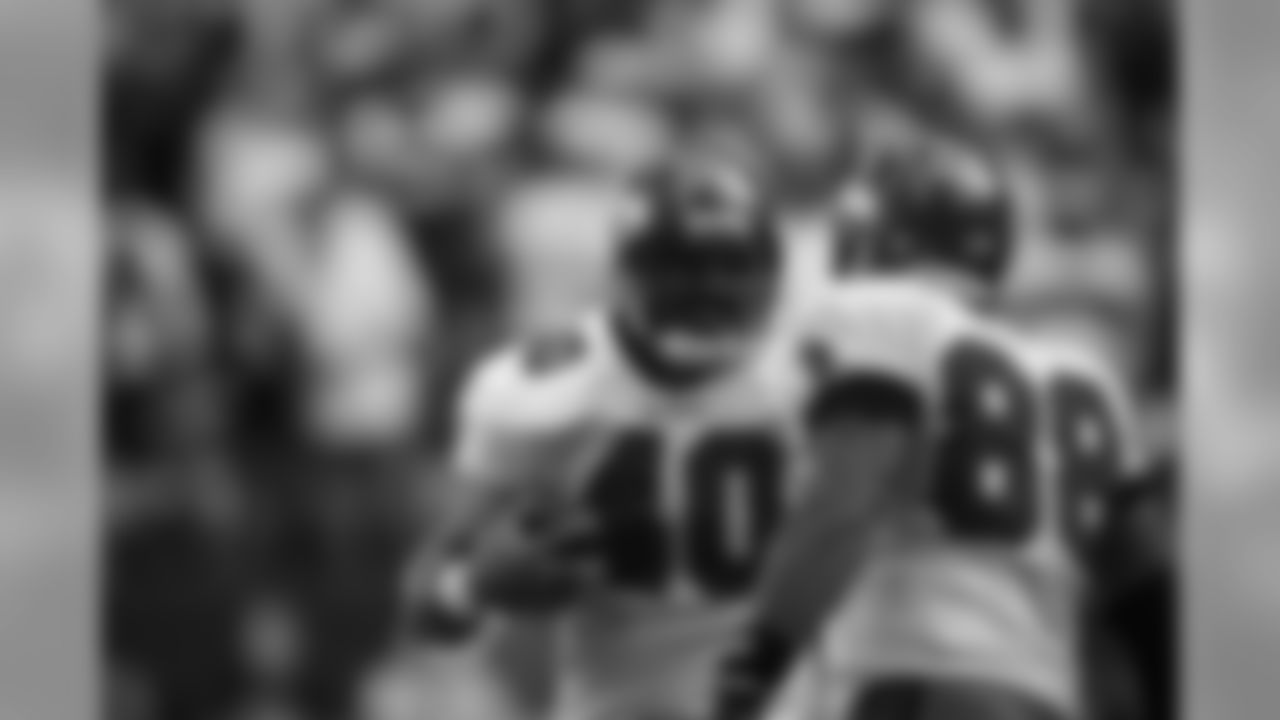
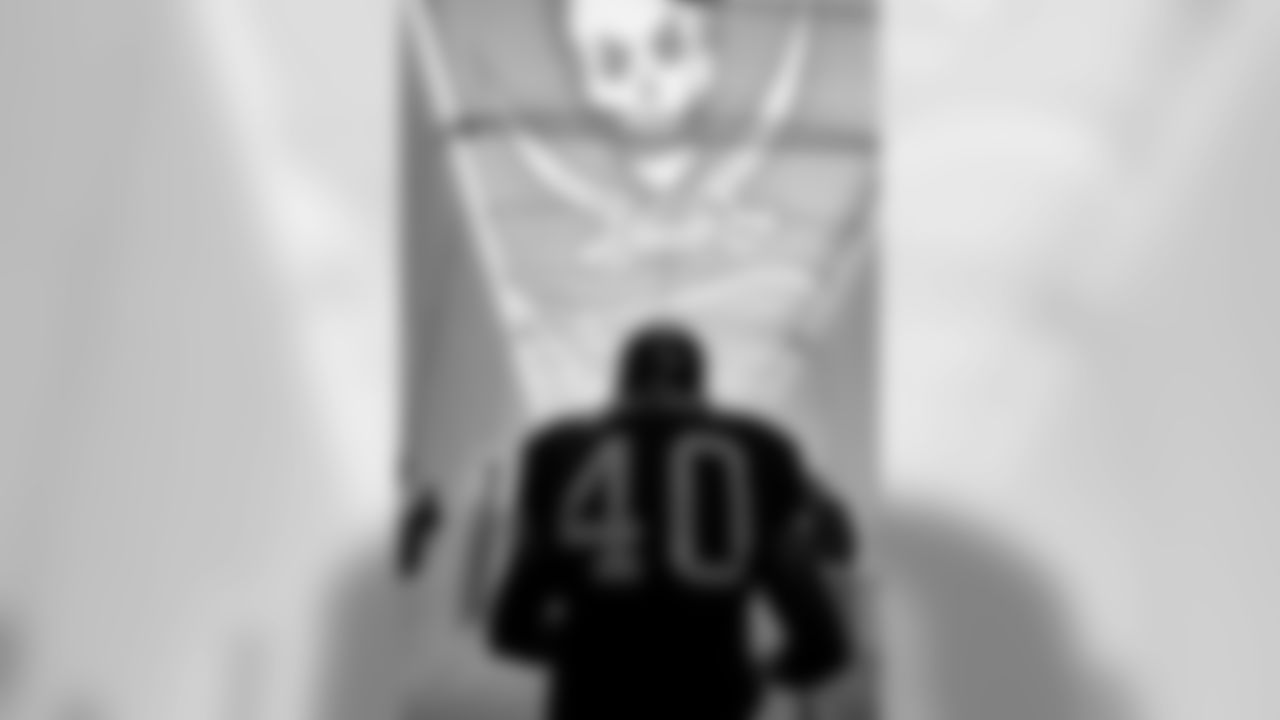
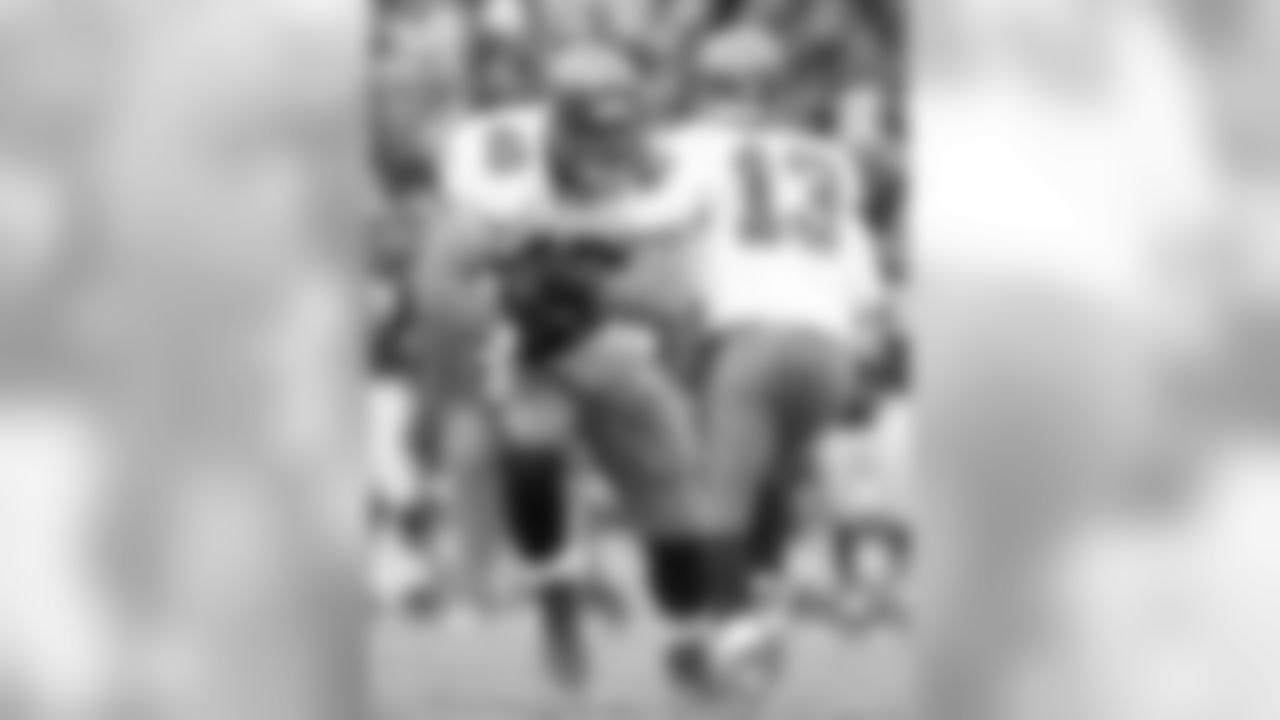
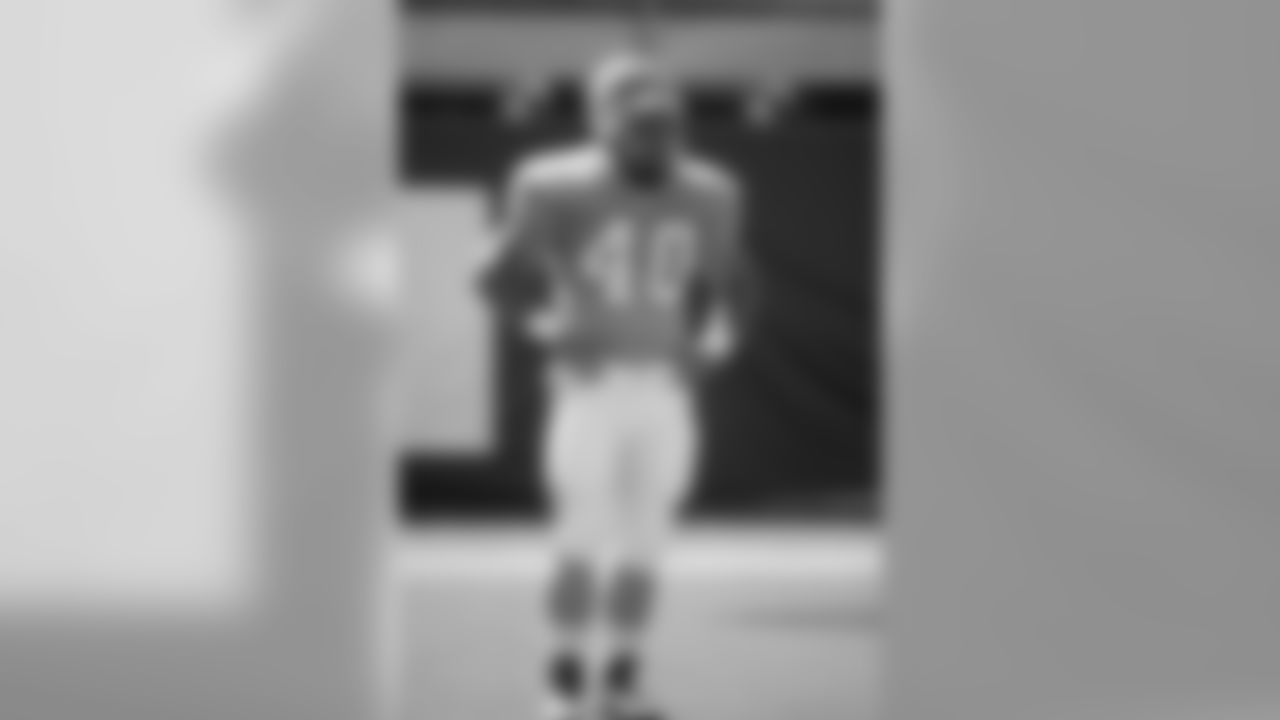
Gruden also chose to give the ball to big FB Mike Alstott, the Bucs' all-time leader in finding the end zone. That wasn't necessarily an obvious decision, as Alstott had been used sparingly in the offense for the first half of the season. The Bucs had faith that Alstott could get the one yard needed, and he repaid that faith with a second-effort lunge that just got the ball to the goal line.
Or did it? The play was reviewed and upheld, vindicating Alstott, Gruden and Buccaneer fans that saw the nose of the ball cross the line. Safe to say, however, that the folks on the other sideline viewed it a little differently. Said Washington Head Coach Joe Gibbs a day later, in reference to what his players saw on the two-point try: "They felt like [the ball] was on the ground before he got in. That's what everybody told me. Obviously, I didn't get a chance to see the replays and stuff, but hey, you guys did. That is what instant replay is for."
6. Shepherd Nearly Does It Again
The Bucs went on to win the NFC South in 2005 with an 11-5 record, and they would play host to those same Washington Redskins in the Wild Card round of the playoffs. Amazingly, the fourth quarter almost unfolded in identical fashion as the game from two months earlier, with Simms once again going deep to Shepherd.

In this case, Simms threw from the Washington 35 instead of the 30, and he uncorked perhaps the best pass of his Buccaneer career. It was once again Shepherd getting behind the Redskin defense down the middle, getting in position to make a diving catch and land about six yards deep in the end zone. Shepherd jumped immediately to his feet and joined with his teammates in celebrating what appeared to be a game-tying touchdown with three minutes to play.
However, the official in the end zone, who was just yards away from Emanuel as he hit the ground, immediately began crossing his arms in the familiar no-catch symbol. As replay would confirm, the ball momentarily slid out of Shepherd's sure possession as he hit the ground, and the eagle-eyed official had seen it happen. The Bucs challenged the ruling but the call was upheld and Washington was able to hold on to a 17-10 victory despite being held to 120 yards of offense by the league's number-one ranked defense.
For this reason, there was probably no shortage of Buccaneer fans who instantly understood why Dez Bryant's apparent catch was overturned in Green Bay two weeks ago. Though the debate over the Bryant ruling made frequent reference to the "Calvin Johnson Rule," based on another surprising overturn of a reception by the Detroit Lions' receiver in 2010, the same interpretation from the rulebook had bitten Shepherd years earlier.
On the play, Shepherd hauls the pass in about four yards into the end zone as a Washington defender dives at him from behind. The contact from the defender takes Shepherd to the ground as he's making the catch, which means that he must maintain possession of the ball through contact with the field in order for it to be ruled a completed pass. The fact that he makes the catch in the end zone is irrelevant; the play is not immediately dead upon his initial catch of the ball because he does not establish possession in the end zone until he completes the reception.
Suffice it to say, there are many Buc fans who still do not agree with the ruling on Shepherd's play, and the Dez Bryant decision probably created many more critics of that particular rule.
7. Flag Hurts Bucs Postseason Chances
The 2010 Buccaneers were 8-5 and trying to hang around in the NFC playoff hunt when the Detroit Lions came to town in Week 15. The two teams engaged in a back-and-forth battle that witnessed four lead changes and a fifth quarter of play before it was resolved.

The Lions were leading, 17-14, midway through the fourth quarter when the Bucs drove deep into Detroit territory. A Josh Freeman pass to Arrelious Benn made it first-and-goal at the one, but Washington's defense held on a QB sneak and a run off left tackle by Earnest Graham. On third-and-12, the Bucs spread out the offense and isolated TE Kellen Winslow wide on the right side. Freeman encountered quick pressure in the backfield but was able to get off a hurried lob to the back right corner of the end zone, where TE Kellen Winslow and S C.C. Brown were engaged in hand-to-hand battle.
Winslow had come off the line and cut underneath Brown in the direction of the back corner, with no contact between the two at that point. Winslow then turned towards the backfield and slowed down, while Brown, with his back to the play, came up and made contact with the tight end. As the pass was in the air, Winslow struggled to break free and eventually did so just in time, separating from the defender to make an over-the-shoulder grab. An official positioned a few yards away in the corner of the end zone, looking directly at the conflict, signaled for the touchdown. However, another official from the middle of the end zone threw a flag, calling offensive pass interference on Winslow.
The touchdown was negated and the Bucs settled for a tying field goal. They would eventually lose the game in overtime, 23-20. Tampa Bay went on to win its next two games and finish 10-6 but miss out on the playoffs due to a tiebreaker with the 10-6 Green Bay Packers, the league's eventual Super Bowl champs that season.
The Buccaneers believed the flag should not have been thrown and that Winslow was simply breaking free from Brown's grasp, not pushing off. In retrospect, the NFL agreed, informing the team three days later that the call should not have been made.
8. Run-Off Runs Out the Clock
With apologies to Michael Clayton circa 2004, Mike Evans just completed the most impressive season by a rookie receiver in Buccaneers history. With his 1,051 yards and 12 touchdowns, he may have been the team's most valuable player on offense. Obviously, the Buccaneers would have preferred to see those efforts in the context of more victories.
One of Evans' 68 catches nearly did lead to a Buccaneer victory. In Week Two, Tampa Bay took a 14-10 lead deep into the third quarter against the visiting Rams, but saw St. Louis go up by two points with a pair of Greg Zeurlein field goals. Patrick Murray's 36-yarder with five minutes left put the Bucs back on top but Zeurlein answered with a 38-yarder with 42 seconds to play.
The Bucs thus faced a 19-17 deficit with no timeouts and less than a minute to go. After a touchback, RB Bobby Rainy got a quick 19 yards on a catch-and-run and the Bucs hustled up to kill the clock with a spike. Snapping the ball with 20 seconds to play, QB Josh McCown found Evans down the numbers on the right side for a 29-yard gain to the Rams' 32. Now in position for a 50-yard attempt at a game-winning field goal, the offense once again sprinted down the field to set up a spike.
Unfortunately, Evans was hit very hard on the play, and while he held onto the ball he was slow to get off the ground. Sensing the problem, several of Evans' teammates tried to help him to his feet to get lined up for the spike, but an official signaled the play dead due to the presence of an injured player.
The problem for the Buccaneers is that they were out of timeouts. When a player on offense is injured and the clock is stopped in the last two minutes of either half, and his team does not have any remaining timeouts, there is a mandatory 10-second run-off on the clock. This is to prevent teams from feigning injuries in order to stop the clock.
The bigger problem for the Bucs is that there were less than 10 seconds left when the official stopped the clock. That meant the 10-second runoff ended the game and the Bucs were not allowed to take another snap. Though the rule was correctly applied, the turn of events still had a whiff of controversy – perhaps "unintended injustice" would be a better term – because Evans actually was shaken up on the play. The rookie receiver wasn't trying to give his team an advantage by feigning an injury; in fact, his actual pain proved to be a major disadvantage for the Buccaneers, though he certainly couldn't be blamed for that fact.
*Box scores via pro-football-reference.com
























